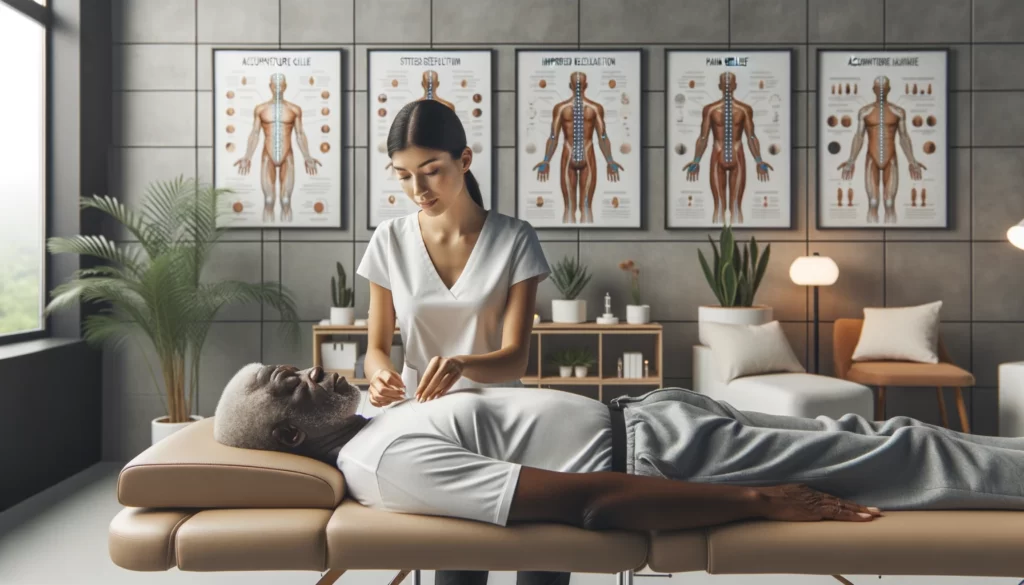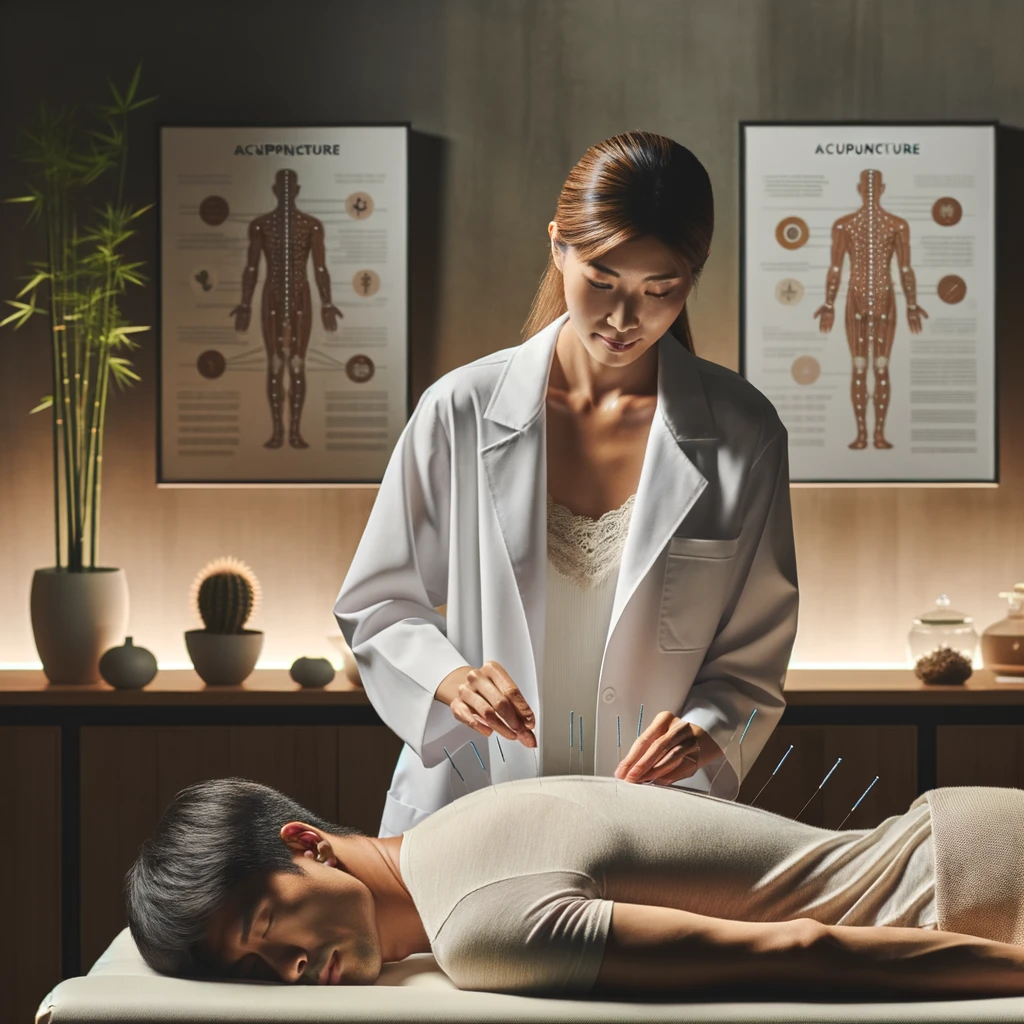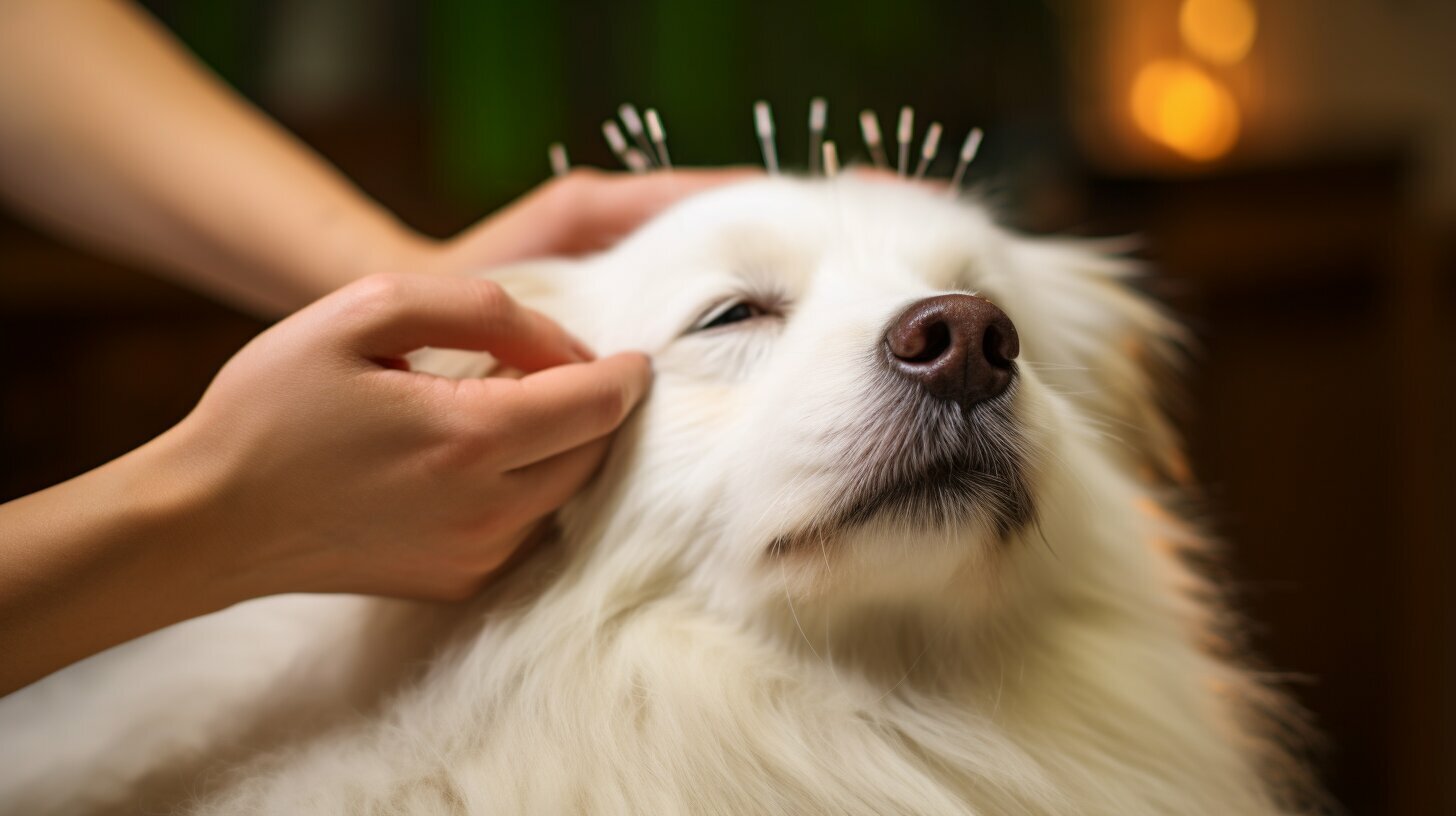
Hey there! Welcome to my friendly guide on acupuncture. Today, we’re going to explore the meaning of acupuncture, what it entails, and how it can benefit you. So, let’s dive right in!

Acupuncture is a holistic healing practice that has been around for centuries. It involves the insertion of thin needles into specific points on your body to stimulate sensory nerves. This ancient practice aims to balance the life forces known as Qi and promote overall wellness.
But what exactly does acupuncture therapy do? Well, it originates from traditional Chinese medicine (TCM) and has now become widely used as a complementary therapy worldwide. While the exact mechanism of acupuncture is not fully understood, it is believed to have a neurological effect and promote the flow of energy in your body.
Acupuncture has shown great promise as an effective treatment for chronic pain, headaches, and various health conditions. The best part? It carries a low risk of side effects and can be combined with other treatments for optimal results.
Key Takeaways:
- Acupuncture is a holistic healing practice that involves the insertion of thin needles into specific points on the body.
- It aims to balance the life forces known as Qi and promote overall wellness.
- Acupuncture is widely used as a complementary therapy worldwide.
- It can be an effective treatment for chronic pain, headaches, and various health conditions.
- Acupuncture carries a low risk of side effects and can be combined with other treatments for optimal results.
How Does Acupuncture Work?
Acupuncture works by stimulating sensory nerves in the skin and muscles through the insertion of thin needles. This stimulation affects pain processing in the central nervous system and muscles, as well as increases blood flow to certain areas of the body. The practice targets specific acupuncture points along meridians, or pathways, in the body. These points are accessed through 361 acupuncture points that correspond to different areas and conditions in the body.
By stimulating these points, acupuncture aims to restore balance and promote pain relief. While the exact mechanism of acupuncture is not fully understood, studies have shown its effectiveness in providing distinguishable pain relief benefits.
To better understand the concept, here is a table showcasing some commonly used acupuncture points and their corresponding benefits:
| Acupuncture Point | Benefits |
|---|---|
| LI4 (Hegu) | Pain relief, headache relief, immune system boost |
| LV3 (Taichong) | Regulation of liver function, stress reduction |
| SP6 (Sanyinjiao) | Hormonal balance, menstrual pain relief |
| GB20 (Fengchi) | Headache relief, neck tension relief |
These are just a few examples, as there are numerous acupuncture points that can be targeted for various health concerns.
Overall, acupuncture’s effectiveness in providing pain relief and promoting wellness can be attributed to the combination of sensory nerve stimulation, pain modulation in the central nervous system, and increased blood flow to targeted areas. It is a holistic approach to healing that continues to be embraced by many individuals seeking alternative therapies.
Benefits of Acupuncture Therapy
Acupuncture therapy offers a wide range of benefits for overall health and wellness. It is a flexible form of treatment that can be combined with other therapies and is particularly effective in managing chronic pain, migraines, and headaches. One of the main advantages of acupuncture is its low risk of side effects compared to many conventional medical treatments.
Studies have shown that acupuncture can be beneficial for various conditions such as low back pain, neck pain, osteoarthritis, knee pain, and fatigue. It has also been found to assist in the treatment of conditions like migraines, peripheral neuropathy, nausea, rheumatoid arthritis, and tendinopathy. Acupuncture aims to restore balance in the body and promote overall well-being by stimulating specific points on the body known as acupuncture points.
When it comes to acupuncture treatment, it is important to note that while it can provide significant benefits, it should not replace conventional medical help. Acupuncture should be used as a complementary therapy alongside recommended medical treatments. It is always advisable to consult with a primary care physician before starting acupuncture or any other alternative treatment.
Benefits of Acupuncture Therapy:
- Pain relief, including chronic pain management
- Improved well-being and overall health
- Reduction in headaches and migraines
- Enhanced relaxation and stress reduction
- Improved sleep quality
- Support for other medical treatments
Acupuncture therapy can be a valuable addition to a comprehensive healthcare plan, helping individuals manage their symptoms and improve their quality of life. With its long history of use and growing scientific evidence, acupuncture continues to gain recognition as a safe and effective treatment option for various health conditions.
How Acupuncture is Performed
Acupuncture treatment is a carefully administered procedure that involves the insertion of thin, sterile needles into specific acupuncture points on the body. The acupuncturist begins by conducting an examination and assessment of the individual’s condition to determine the appropriate course of treatment. The needles are then inserted into the targeted points, which may be just under the skin or deeper into the muscles, depending on the specific condition being treated.
The individual undergoing treatment typically sits or lies down during the procedure, and the needles remain in place for a period of 20 to 60 minutes. Some acupuncturists may use heat or electrical stimulation on the needles to enhance the therapeutic effect. The number of treatments required varies based on the individual’s case. Chronic conditions often require one or two treatments per week over several months, while acute issues may improve after 8 to 12 sessions.
It is important to note that acupuncture should be performed by a qualified and experienced acupuncturist. Consulting a primary care physician before undergoing acupuncture is advisable, especially to ensure that it is used in conjunction with recommended medical treatments. While acupuncture is generally considered safe, it is essential to receive treatment from a reputable practitioner to minimize any potential risks.
Benefits of Acupuncture Treatment:
- Effective in managing chronic pain
- Beneficial for migraines and headaches
- Low risk of side effects
- Flexible treatment that can target multiple health concerns simultaneously
- Complementary therapy that can be used alongside conventional medical treatments

It is important to remember that acupuncture should not replace traditional medical treatment but rather complement it. By working in harmony with conventional therapies, acupuncture can offer a holistic approach to wellness and improved quality of life.
Traditional Acupuncture Points and Acupuncture Treatments
Acupuncture therapy relies on the stimulation of specific points on the body known as acupuncture points. These points have been mapped for centuries and are an integral part of traditional Chinese medicine. While the exact number of acupuncture points may vary, international acupuncture practices recognize 361 points identified by the World Health Organization.
These acupuncture points are located along 14 main meridian channels, each corresponding to a specific organ in Chinese medicine. By targeting these points, acupuncturists aim to restore balance and promote healing in the body. Different points are selected based on the individual’s condition and the desired effect.
Some commonly used acupuncture points include ST36, which is known for its effectiveness in treating digestive disorders; SP6, which is often used for hormonal imbalances; LV3, a point that can help with headaches and emotional balance; GV20, which is effective for vertigo and mental disorders; and CV12, commonly used for digestive disorders.
These traditional acupuncture points play a key role in acupuncture treatments as they are believed to influence the flow of energy, or Qi, in the body. By stimulating these points, acupuncturists can address a wide range of conditions and promote overall wellness.
FAQ
What is acupuncture?
Acupuncture is a holistic healing practice that involves inserting thin needles into specific points on the body to stimulate sensory nerves and promote overall wellness.
How does acupuncture work?
Acupuncture works by stimulating sensory nerves in the skin and muscles through the insertion of thin needles. This stimulation affects pain processing in the central nervous system and muscles, as well as increases blood flow to certain areas of the body.
What are the benefits of acupuncture therapy?
Acupuncture offers several benefits for overall health and wellness. It can be combined with other treatments and is particularly effective in managing chronic pain, migraines, and headaches. Acupuncture has also been found to be beneficial for conditions such as low back pain, neck pain, osteoarthritis, knee pain, fatigue, and more.
How is acupuncture performed?
Acupuncture treatment begins with an examination and assessment of the individual’s condition by an acupuncturist. Thin, sterile needles are then inserted into specific acupuncture points on the body. The number of treatments needed varies based on the individual’s case.
Is acupuncture available on the NHS?
Acupuncture is available on the NHS in the United Kingdom, mainly in GP surgeries and pain clinics. However, access to acupuncture on the NHS can be limited. Most acupuncture patients opt for private treatment.
What are traditional acupuncture points and acupuncture treatments?
Traditional acupuncture points are specific locations on the body where needles are inserted to stimulate the flow of energy and promote healing. These points are used to treat various disorders and conditions. Commonly used points include ST36 for digestive disorders, SP6 for hormonal disorders, LV3 for headaches and emotional balancing, GV20 for vertigo and mental disorders, and CV12 for digestive disorders.



